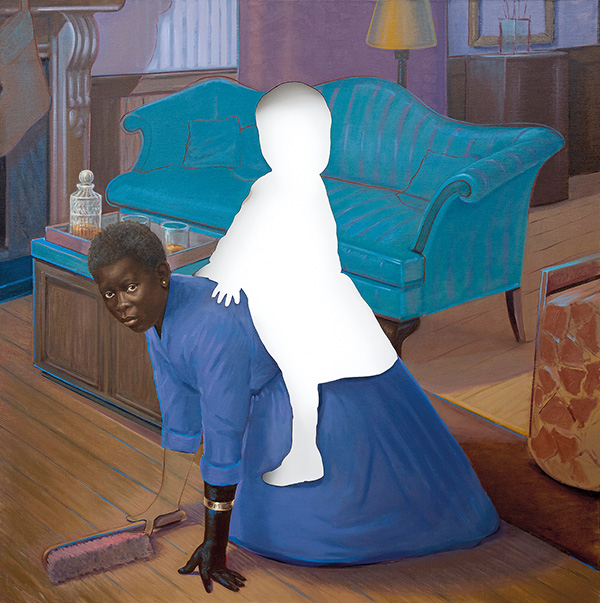Audio Stop 967

oil on canvas
Courtesy of Nick Cave
Audio © John D. and Catherine T. MacArthur Foundation—used with permission
Titus Kaphar
Space to Forget, 2014
Read full audio transcript
TITUS KAPHAR:
I make paintings that people perceive often as being very social or political, but for the most part they're all very personal. Everything stems from my relationship to a situation, to a narrative, to a story. My name is Titus Kaphar and I’m an artist.
NARRATOR:
In Space to Forget, a black woman, a domestic worker, is on all fours. She holds a long cleaning brush with a nearly transparent hand. And astride her back is the stark white cutout of a child. Compare this painting to the source image on the adjacent label, which shows the missing white child, taken by a German-Brazilian photographer in 1899.
Much of Kaphar’s work addresses so-called traditional art, the role black individuals play in it, and in the “official” version of history.
TITUS KAPHAR:
I had one art history book that had a particular chapter in it that actually did focus on Black people, people of color. These characters are often enslaved, in servitude, or impoverished, and so it drew me to wanting to understand how this all came about, representing Black people. What was their symbolic purpose in the paintings, and in the sculptures that they were in, because clearly it wasn't for them to be the primary character.
I use a lot of different techniques in making paintings. Sometimes the surface of the canvas will be cut out, something will be removed from the surface of the canvas in order to show something behind. This theme or this idea of layers and multiplicity is a reoccurring theme in my work. There are always multiple narratives. I'm asking the viewer to try to piece that whole story together without leaving behind the valuable narrative of, in many cases, those people who have been silenced over years.